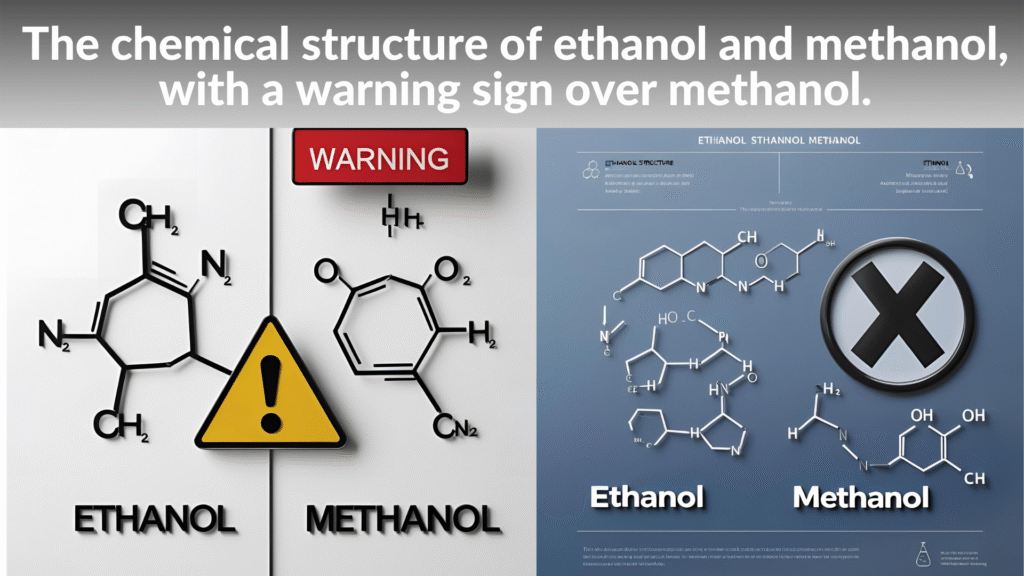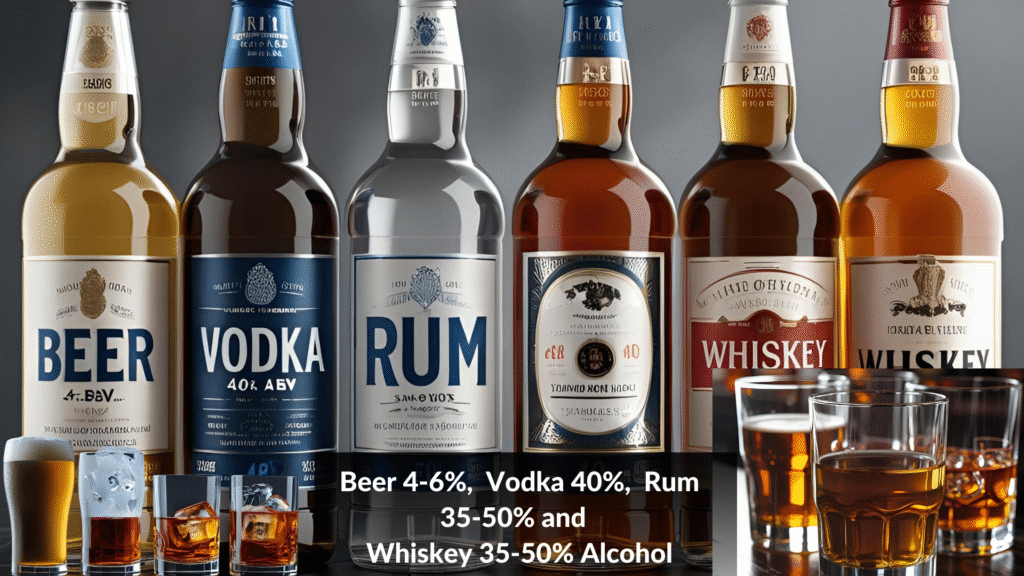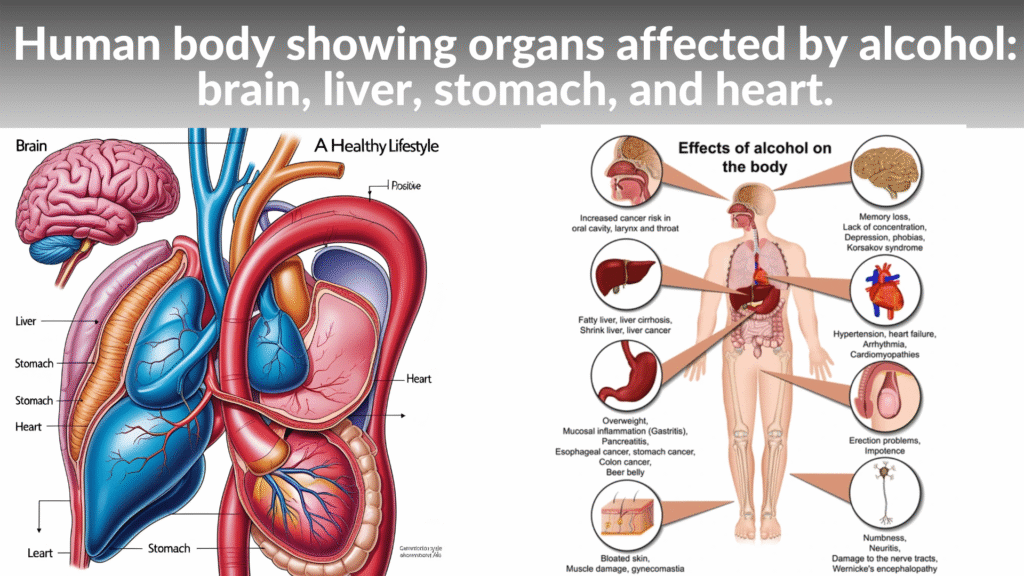Introduction
Alcohol plays a major role in modern society, appearing in everything from celebrations to casual dinners. But despite its popularity, alcohol remains a controversial and often misunderstood substance. This article explores essential alcohol facts, including its effects on the human body, different types of alcoholic drinks, safe consumption guidelines, and long-term health risks. Whether you’re a casual drinker or considering quitting alcohol, this guide will help you make better, healthier choices.
1. What Is Alcohol?
In chemical terms, alcohol is a group of organic compounds, but when we talk about drinking alcohol, we mean ethanol. Ethanol is produced by fermenting sugars found in fruits, grains, and vegetables. It is the only type of alcohol safe for human consumption in small quantities.
Another form, methanol, is toxic and can cause serious health complications such as blindness, organ failure, or death. Methanol contamination is a risk with illicit or poorly distilled alcoholic beverages.

2. Types of Alcoholic Beverages
There are several popular types of alcoholic drinks worldwide, each with unique ingredients, production processes, and alcohol content. Understanding these helps make informed choices.
- Beer – Made by fermenting barley and hops. Alcohol by volume (ABV): 4–6%.
- Vodka – A clear distilled spirit made from grains or potatoes. ABV: ~40%.
- Rum – Distilled from sugarcane or molasses. ABV: 35–50%.
- Whiskey – Made from fermented grain mash and aged in wooden barrels. ABV: 40–50%.
Each drink differs in taste, strength, and impact on health. Lighter drinks like beer might seem safer, but quantity and frequency matter more.

3. Alcohol Production Explained
Alcohol is produced through two main processes: fermentation and distillation.
- Fermentation: Yeast breaks down sugars into ethanol and carbon dioxide (CO₂). This is how beer and wine are made.
- Distillation: Used for stronger spirits like vodka and whiskey. It involves heating the fermented liquid to extract pure alcohol.
During fermentation, CO₂ is released, giving fizzy drinks like beer their bubbles. Alcoholic beverages differ depending on the ingredients and methods used — grains for beer and whiskey, sugarcane for rum, and potatoes or grains for vodka.
4. Ethanol vs. Methanol: What’s the Difference?
Ethanol is the drinkable form of alcohol found in beer, wine, and spirits. Methanol, on the other hand, is a toxic alcohol used in antifreeze and solvents. Accidental ingestion or contamination can be fatal.
Poorly regulated or homemade alcohol may contain methanol — posing severe health risks. Always consume licensed, quality-assured alcoholic beverages to avoid methanol poisoning.
5. How Alcohol Affects the Human Body
Short-Term Effects of Alcohol:
Once consumed, alcohol enters the bloodstream and affects nearly every part of the body. It acts as a central nervous system depressant, impairing brain function and motor skills.
- Slurred speech, impaired judgment
- Drowsiness and dehydration
- Euphoria or lowered inhibition
Long-Term Effects of Alcohol Consumption:
- Liver damage (fatty liver, hepatitis, cirrhosis)
- Brain damage and memory loss
- Increased risk of heart disease and cancer
- Alcohol addiction and dependence
Organs Affected by Alcohol:
- Liver: Primary site for alcohol metabolism
- Brain: Alcohol interferes with neurotransmitters
- Heart: Increases blood pressure and risk of stroke
- Kidneys: Alcohol causes dehydration and electrolyte imbalance

6. Occasional vs. Daily Drinking: What’s the Real Impact?
Many people believe that occasional drinking is harmless. While drinking once in a while may not cause major harm, binge drinking or even small, daily doses can still negatively impact your health.
Common Misconceptions:
- “I only drink socially, so I’m safe” — False. Even occasional heavy drinking can strain your liver and heart.
- “Wine is healthy” — Only in very moderate amounts, and not for everyone.
Daily alcohol consumption, even in low amounts, can:
- Increase tolerance, leading to higher intake
- Cause sleep problems and mood changes
- Gradually damage internal organs
7. Safe Alcohol Consumption Tips (And Why Avoiding It Is Better)
Health organizations recommend keeping alcohol intake within strict limits:
- Men: Max 2 drinks per day
- Women: Max 1 drink per day
But here’s the truth:
Alcohol, even in moderation, is not good for health. There is no safe amount of alcohol for the body. If possible, avoid drinking altogether — especially if you have preexisting health conditions.
Healthy Tip:
At social events, swap alcoholic drinks with non-alcoholic beverages like mocktails, coconut water, herbal tea, fresh fruit juice, or sparkling water with lemon.
Better Alternatives to Alcohol at Parties:
- Kombucha
- Lemon-mint cooler
- Iced green tea
- Infused detox water
8. Alcohol and Human History
Alcohol has been a part of human civilization for over 9,000 years, with ancient evidence found in China, Egypt, and Mesopotamia. It was used in ceremonies, medicine, and social bonding.
Today, alcohol is a multibillion-dollar global industry. Understanding its origins helps us appreciate how deeply embedded — and potentially dangerous — alcohol is in society.
9. The Drunken Monkey Hypothesis
This fascinating theory suggests that humans evolved to seek alcohol because our ancient primate ancestors were drawn to the scent of fermented fruit. The Drunken Monkey Hypothesis claims that this evolutionary trait helped early humans find ripe, energy-rich food.
Though it’s not scientifically conclusive, it offers an evolutionary perspective on alcohol craving and consumption.
10. FAQs: Alcohol Facts You Should Know
Is beer safer than whiskey?
Beer has lower alcohol content but can still be harmful in large quantities.
Can alcohol ever be healthy?
Some studies suggest red wine may benefit heart health — but the risks outweigh the benefits for most people.
Is methanol present in commercial drinks?
No. Licensed manufacturers follow strict quality standards to ensure drinks are free from methanol.
Does alcohol always contain ethanol?
Yes. Ethanol is the main ingredient in all legal alcoholic beverages.
Conclusion
From its chemical structure to its cultural roots, alcohol is more than just a social drink. It impacts nearly every organ in the human body and poses both short- and long-term health risks. Knowing the facts about alcohol, understanding its types, and following safe consumption guidelines can help you make healthier choices.
Understanding the Alcohol Facts — from its types and production to its effects and safe limits — helps you make informed choices. Alcohol can be enjoyed responsibly, but awareness of its health implications is essential. Whether you’re a casual drinker or abstainer, knowledge is your best protection.
Remember: There is no pressure to drink. And there’s no shame in choosing not to.
Live smart. Drink smart — or not at all.